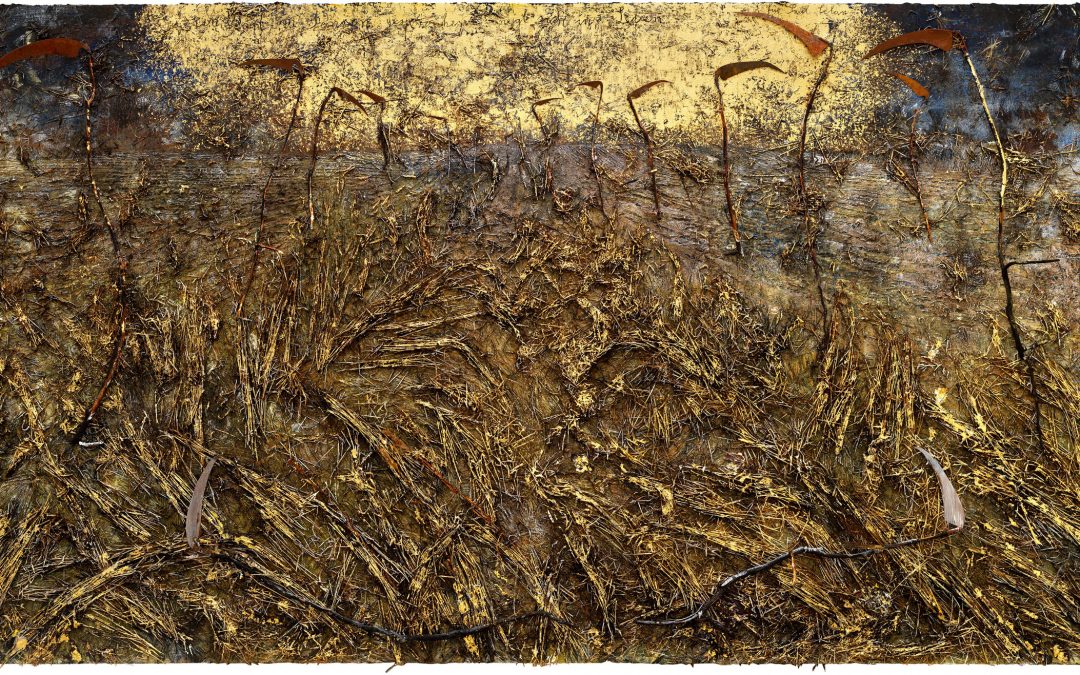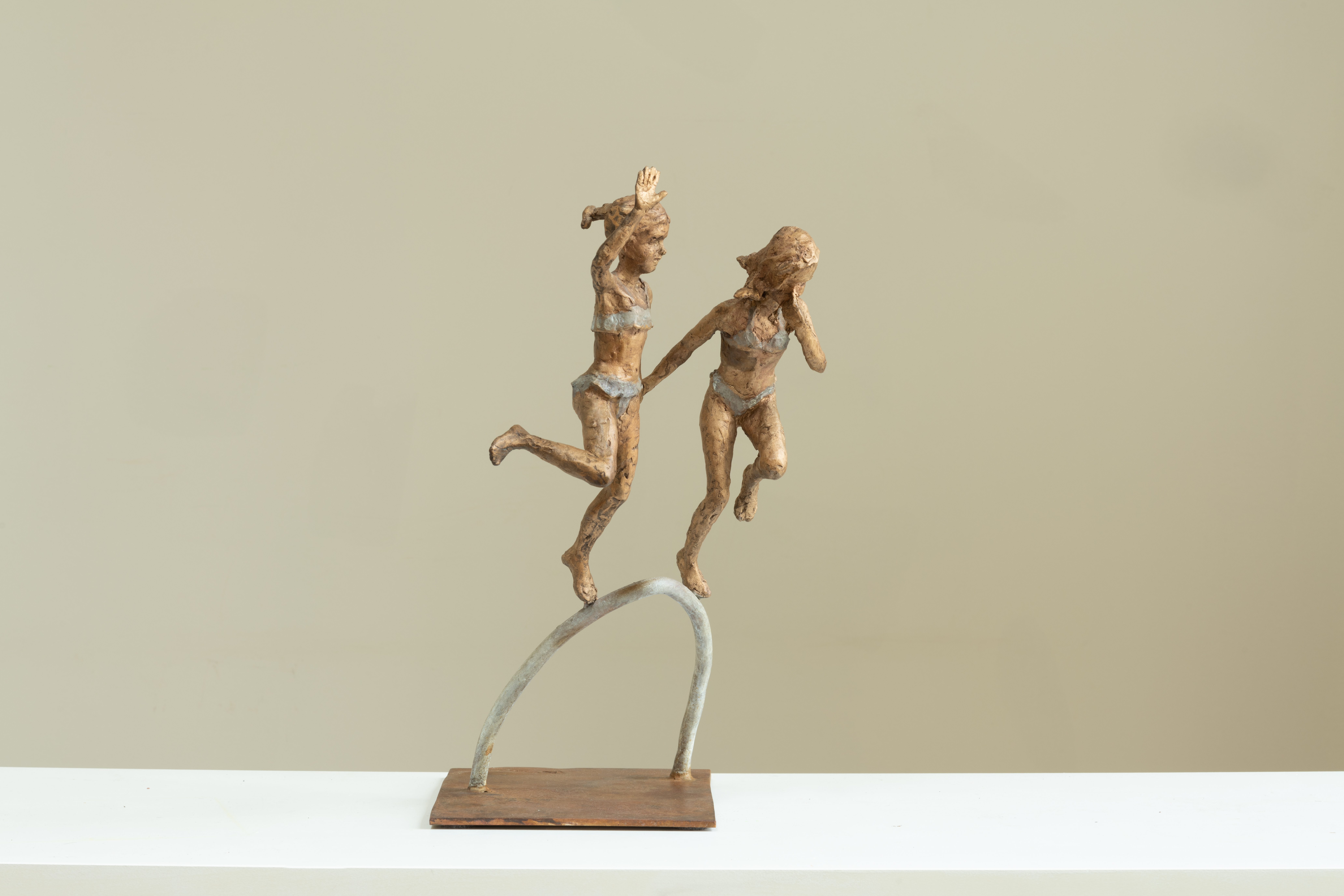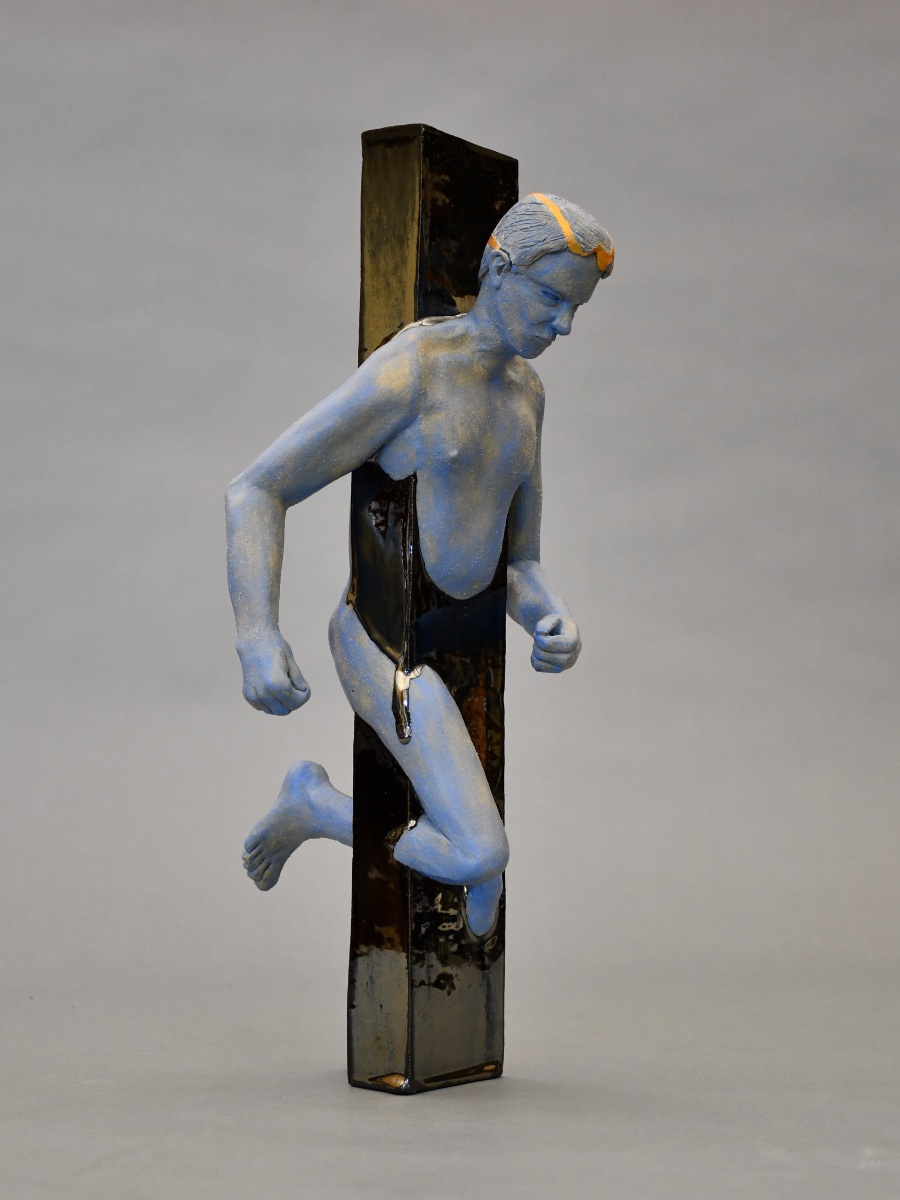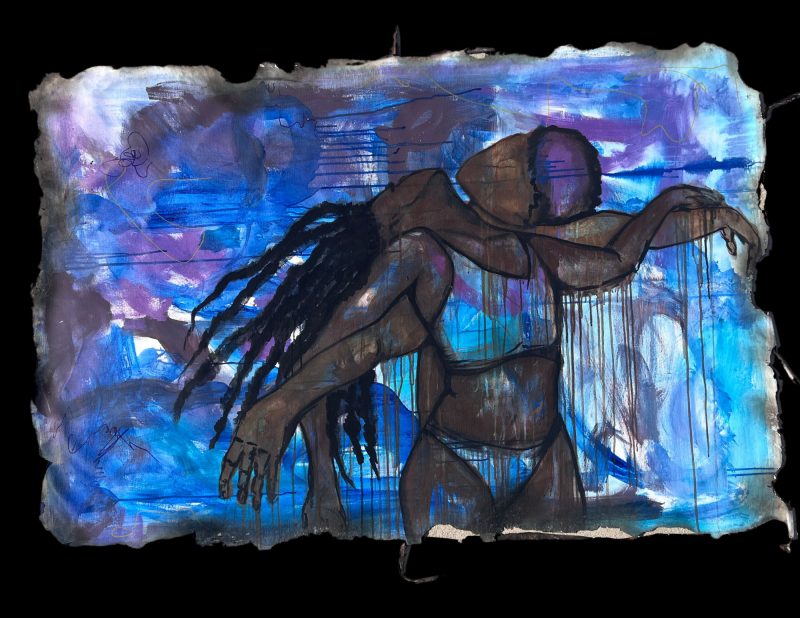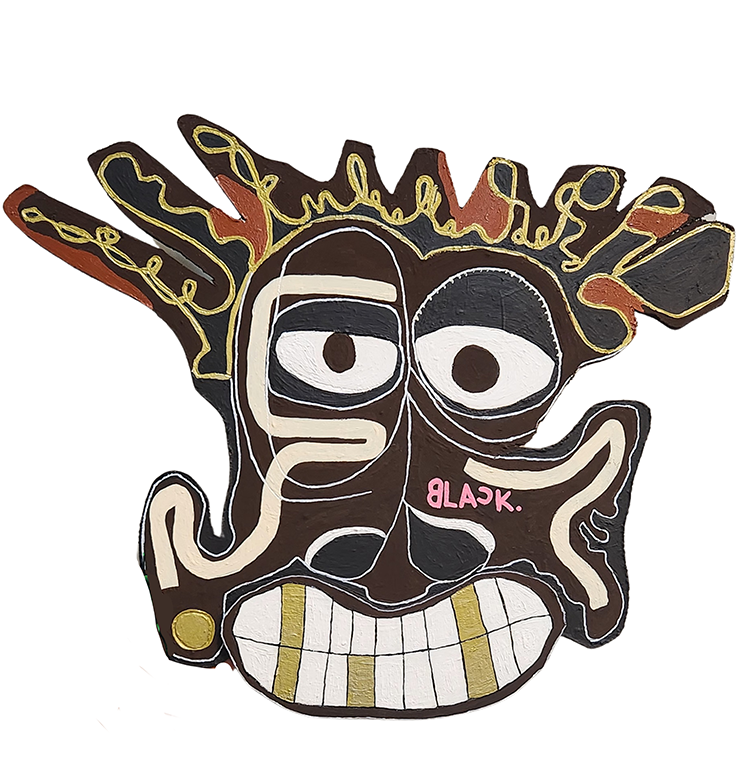Gagosian
January 24 – March 28, 2021
Field of the Cloth of Gold is an exhibition of four new paintings by Anselm Kiefer. Since the 1970s, Kiefer’s work has explored the tension between beauty and terror, alongside the complicated relationship between history and place. Using literature of cultural memory, including poetry, the Old and New Testaments and the Kabbalah, the German painter provides material presence to myths and metaphors. He imbues the medium of paint with what have been described as startling and unconventional gestures and objects, juxtaposing it with organic and abject materials such as straw, sand, charcoal, mud and ash.
Kiefer’s paintings undergo various transformations before finalized. They are cut, exposed to natural elements, burned and even splashed with acid in a way that depicts being reborn or made new. This technique along with the use of materials such as lead, concrete, glass, fabric, tree roots, or burned books creates a symbolic resonance.
The exhibition’s title, Field of Cloth, refers to the historic peace summit between King Henry VIII and King Francis I that occurred five hundred years ago in a field in what is now Pas-de-Calais, France. The conference, centered around a strategic alliance between England and France, had the goal of outlawing war between Christian nations. The alliance was considered a key event in shaping Europe’s geopolitics until it dissolved, and war broke out one year later. Although Kiefer did not begin making these works with this event or title in mind, the connection became apparent and synchronous after their completion.
“The title is often not the explanation of the picture,” but is rather “an allusion,” Kiefer stated in an interview. He further describes history as a material he uses and synthesizes in his work, “like clay for the sculptor or color for the painter.”
As noted in most of Kiefer’s work, each painting’s title and symbols contain a literary and historical set of references. For example, Sichelschnitt (Sickle Cut) refers to the Manstein Plan ( Sichelschnittplan ), a war plan devised by the German Army during the Battle of France in 1940, while Beilzeit — Wolfszeit (Ax Time — Wolf Time) pays homage to “ Völuspá (Prophecy of the Seeress),” the first poem of the Poetic Edda of Old Norse mythology. Verse 45 of this poem is translated as “Ax-time, sword-time, | shields are sundered, / Wind-time, wolf-time, | ere the world falls.”

